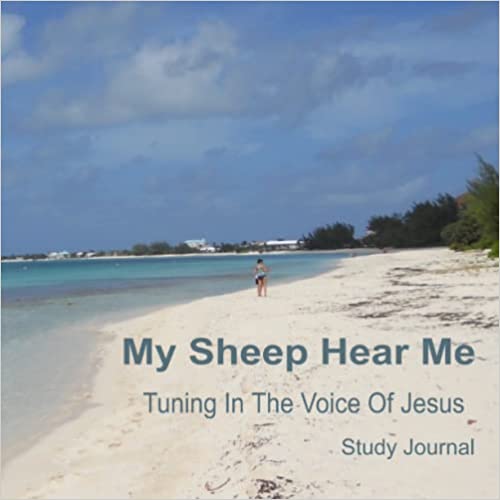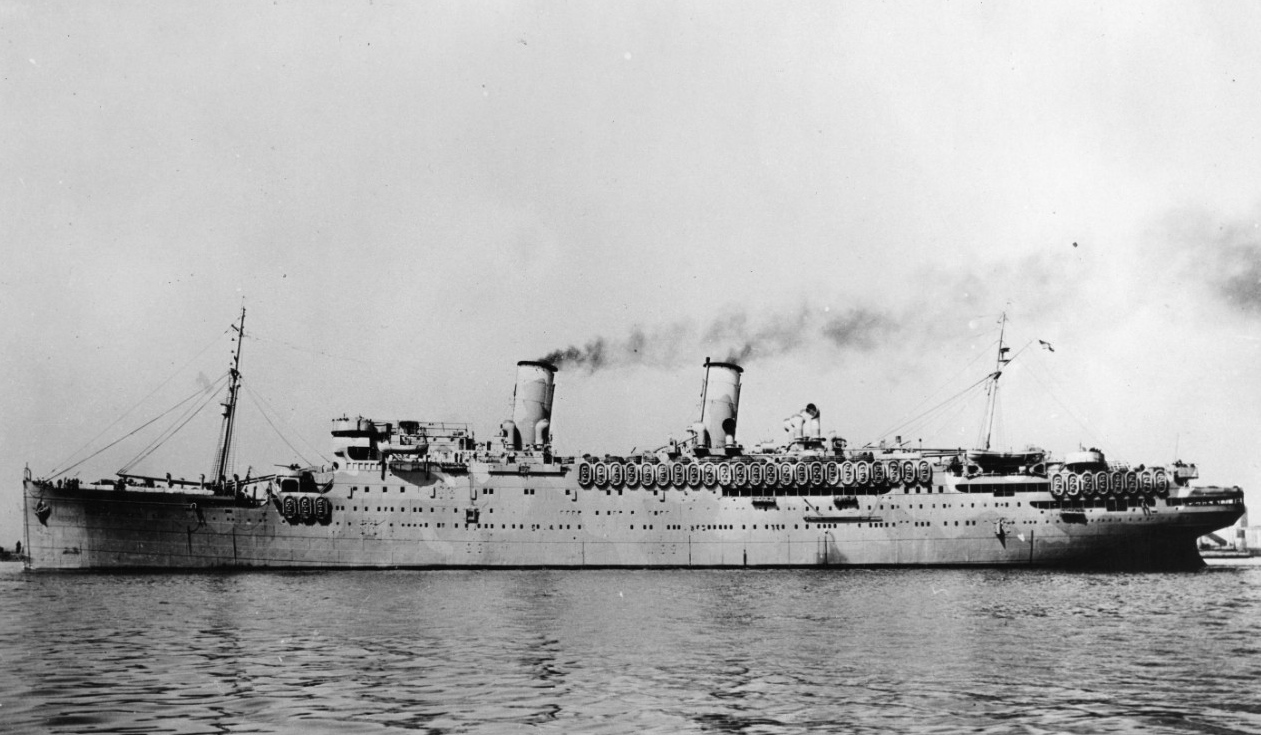During World War 2, a trip with a convoy across the Atlantic was a high risk venture. But by the Summer of 1943, the Allies had greatly reduced the threat of attack by surface vessels. However, the German U-Boat threat, although on the decline, was still very real. And if you found yourself separated from your convoy, or dead in the water, even the US Navy required Divine Favor to make it to their destination.
My Father’s memories of World War 2 continue in this second part of The Woodard Boys Go To World War II, where he discusses his time aboard the USS Monticello (AP-61), a converted Italian ocean liner, and his trip to Oran, Algeria in North Africa.
The Monticello departed from New York on August 21, 1943, and sailed South along the East Coast, before turning East towards North Africa. The convoy was designated UGF 10, which meant fast moving Eastbound convoy #10. They arrived safely at Oran on September 3, 1943. — Harrison Woodard
The Woodard Boys Go to World War II
Sailing To Africa – Part 2
By Hollis Hood Woodard
(1917 – 2009)
I will never forget my feeling when about ten at night we were marched to the port and looked up at this large ship that would be taking us to Africa.
The boat was the USS Monticello (AP-61), an Italian luxury liner that was in a Brazilian port at the beginning of the war and purchased by the US government.
Our quarters were in what had been the swimming pool area and was below the water line. I was really tired and went right to my hammock. When I woke up early the next morning, I could tell we were out in the ocean and moving along pretty good. I was told that we were in waters where German submarines could start taking pot shots at us. In fact, right then, I could hear depth charges exploding in the water.
Our convoy had three destroyers with us and they were racing around us all the time listening for submarines. We had life belts that could be inflated by snapping the tubes about where your belt buckle would be. We had some nuts that took it on themselves to slip up behind you and reach around in front of you and inflate your life belt. I let them know pretty quick that I was not going to tolerate that foolishness because it took you sometime to get replacement cylinders. I always wanted to have my life jacket ready at night because that seemed to be the time the German submarines wanted to be around.
The ship left the port at New Jersey and followed the coast line of the United States and didn’t turn to go across the Atlantic until it reached the Equator. The main reason for this was to avoid going directly across where there was more activity by the German submarines. It makes sense, unless you loose the ability to regulate the temperature of the ship. Then, it becomes problematic.
We experienced smooth sailing for about five days. Then, I heard a loud explosion and felt that big ship shake. I was in my hammock reading my bible when it happened and my first thought was that we had been hit by a German submarine. There was smoke and steam everywhere and no one seemed to know what had happened. I knew I had to find Frank and see if he was alright. I was told that he had been with a group in the mess area peeling potatoes. I started looking for him and kept meeting guys coming from below. Those that knew him said Frank was on his way up. Finally, I saw him coming up the stairs and when I could write home without being censored, I told my folks that Frank wasn’t in a hurry and if I didn’t know better, I don’t think he was bothered a bit about the whole matter. In fact, I had seen him walking faster when he used to go to the pastures to get the cows and mules. One soldier told me he ran past Frank and asked if he knew what had happened. Frank told him he didn’t know what had happened. Then the guy asked Frank what he would recommend that they do. He said Frank told him he might try praying. We were later to learn that a boiler blew up on the ship and two sailors had been killed.
Our boat dropped out of the convoy and started drifting. A destroyer came up and kept sailing around us to prevent a submarine from coming in and sinking our ship. Finally, about dark we were able to get moving but the blast had knocked out our cooling system and it was unbearably hot in our quarters and the guys started getting sick and some were passing out. Finally, our Medical Officer came in and was going from hammock to hammock checking the guys with a flash light. If he thought some were ready to pass out he would make them get up and start walking around. I was awake and watching him work with the sick guys when he came up to me and asked would I like to go out on deck and sleep. I jumped at the opportunity and was one of the first to get out on deck. I found a lifeboat and used part of it for a pillow and laid down on the deck right under one of the big smoke stacks. There was a nice sea breeze blowing out there and I dropped right off to sleep. I had this dream all night that water was running under me and then leaving. I was so sleepy I couldn’t get awake. In the morning I noticed a puddle of water near me and I guess as the boat rolled back and forth the water would run under me and back out again. I was wet, but didn’t mind it because I got a good night’s sleep under the stars.
They got our cooling fixed the next day and the remainder of our trip to North Africa was pretty smooth. If there was a problem it was eating on the ship. They fed us at long tables with sides on the table to keep the food from rolling off the table as the ship bounced up and down on the waves. If you had your food in front of you and the ship would roll a certain way if you weren’t careful your food would slide down the table and you would find that you had someone else’s food in front of you. One time the sea got so rough the food would go over the side bars onto the floor of the ship. One morning when I went down, we had pinto beans for breakfast and the seas were so rough that it was hard to keep the beans on the table. In fact several guys let theirs get away from them and we had the floor covered with pinto bean soup. I never craved pinto beans for breakfast and the fact I had to stand in bean soup to eat them almost made me sick.
About two days before we saw land, we began to see sea gulls and knew we were getting close to land. The morning we were to arrive, it was real foggy and we couldn’t see the ships on each side of us. We had a call for general quarters and all the sailors reported to their antiaircraft guns. We couldn’t imagine a plane out in that fog. Finally, when there was a break in the fog, we saw the plane. It was a French plane that was at that time an antique. We all had a big laugh and he turned and headed back to land.
About that time the fog lifted and I got the scare of my life. I looked behind our ship and noticed what I thought was a submarine periscope sticking up out of the water. I grabbed the first sailor I could get a hold of and showed it to him. He laughed and told me to look and I would see all the ships had one of them following them. He was kind enough to explain to this old country boy that ships in convoys put these out to prevent them from running into each other while in a fog. After that I was ready to put my feet on solid ground.
Note: My Father’s notes state that his transport ship was a converted Italian cruise ship called the Monte Cella – named after a mountain in Northern Italy. I could not verify this in my research. Instead, I discovered the SS Conte Grande, an Italian ship held by Brazil at the start of the war and later sold to the US. She was converted to a troop transport and renamed the USS Monticello (AP-61), in honor of Thomas Jefferson’s home. The names are too similar to be a coincidence, so I am confident that he was on the USS Monticello for the trip to North Africa.
Part 1 – Part 2 – Part 3 – Part 4 – Part 5 – Part 6 – Part 7 – Part 8
Search for Other Christian Web Sites.




